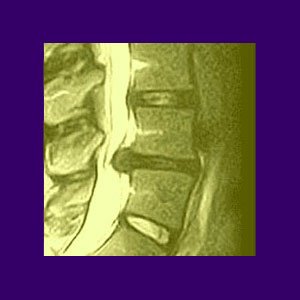
The diagnosis of spinal stenosis can be a terrifying ordeal for any patient and is even worse if the victim does not fully understand the facts of central canal narrowing. The diagnostic process is straight forward and simple, as far as recognizing the telltale signs of a stenotic canal space. However, the correlation of symptoms is a very subjective matter and this is where some care providers might take the opportunity to frighten the patient into treatment or even surgery unnecessarily.
So, let’s start this article off correctly by mentioning the proven fact that minor stenosis in highly unlikely to cause any pain whatsoever. In fact, stenosis in the cervical and/or lumbar areas is an expected part of getting older. The remainder of this essay will help to describe the diagnostic process for central spinal canal stenosis.
Diagnosis of Spinal Stenosis Process
For patients with existing back or neck pain, the diagnosis of spinal stenosis will start with a physical exam and evaluation of the symptoms. If the expression points towards spinal stenosis as a possible cause of the pain problem, x-rays will usually be taken. It is common to perform additional imaging tests to increase the detail of the problem. MRI, CT scan or myelogram will all show far more detail than the original x-ray, since they can image soft tissues, as well as the vertebral bones. If a narrowed canal space is found to exist then the diagnosis of spinal canal stenosis will be made formally.
After reviewing all diagnostic tests and interviewing the patient for all the facts about the location, duration and severity of the stenosis symptoms, the doctor will make a recommendation for treatment. A good doctor will always start with the most conservative treatments available and will inform the patient of all the pros and cons associated with these selections.
Beware of care providers who push for invasive back surgery early in the diagnostic process, as this option should be reserved as a last resort in virtually every case. Remember, surgery can always be done, but it can never be undone.
Spinal Stenosis Diagnostic Conclusions
I would always recommend getting a second or third opinion after being diagnosed with mild to moderate spinal stenosis. It is true that you might demonstrate the structural signs of the condition, but there is a good chance that the minor stenosis is not the actual problem causing your suffering. It would be a terrible waste of time, money and effort to go through a treatment program designed for stenosis, just to discover that the symptoms are being generated by some other condition. Unfortunately, this occurs in quite a few instances.
Stenosis is a condition that is often assumes the role of scapegoat for unexplained back or neck pain even when it is innocent of causing any symptoms. Do not be surprised if your agony is actually caused by some other physical or psychological reason.
Remember, spinal stenosis is a normal part of the aging process. It can become problematic in severe forms, but most often will not cause symptoms when the stenotic changes are conservative. Also, keep in mind that the diagnostic nocebo effect of this condition is very strong and might be the real reason why pain may begin or escalate after a positive diagnosis.




